The Decay Spectroscopy Station

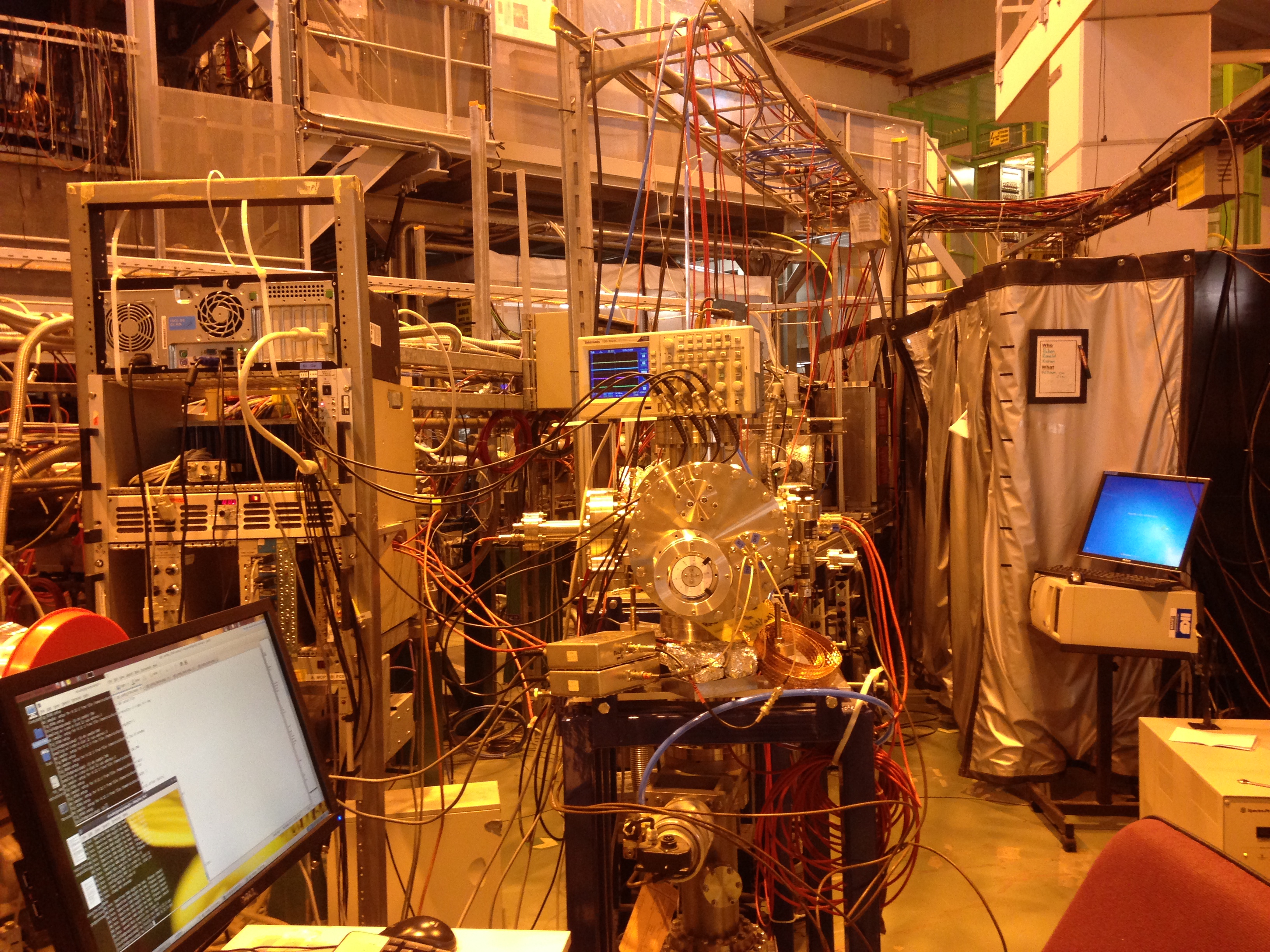
Instead of detecting the resonant ions with the MCP, the ions can instead be deflected to the Decay Spectrosopcy Station (DSS).
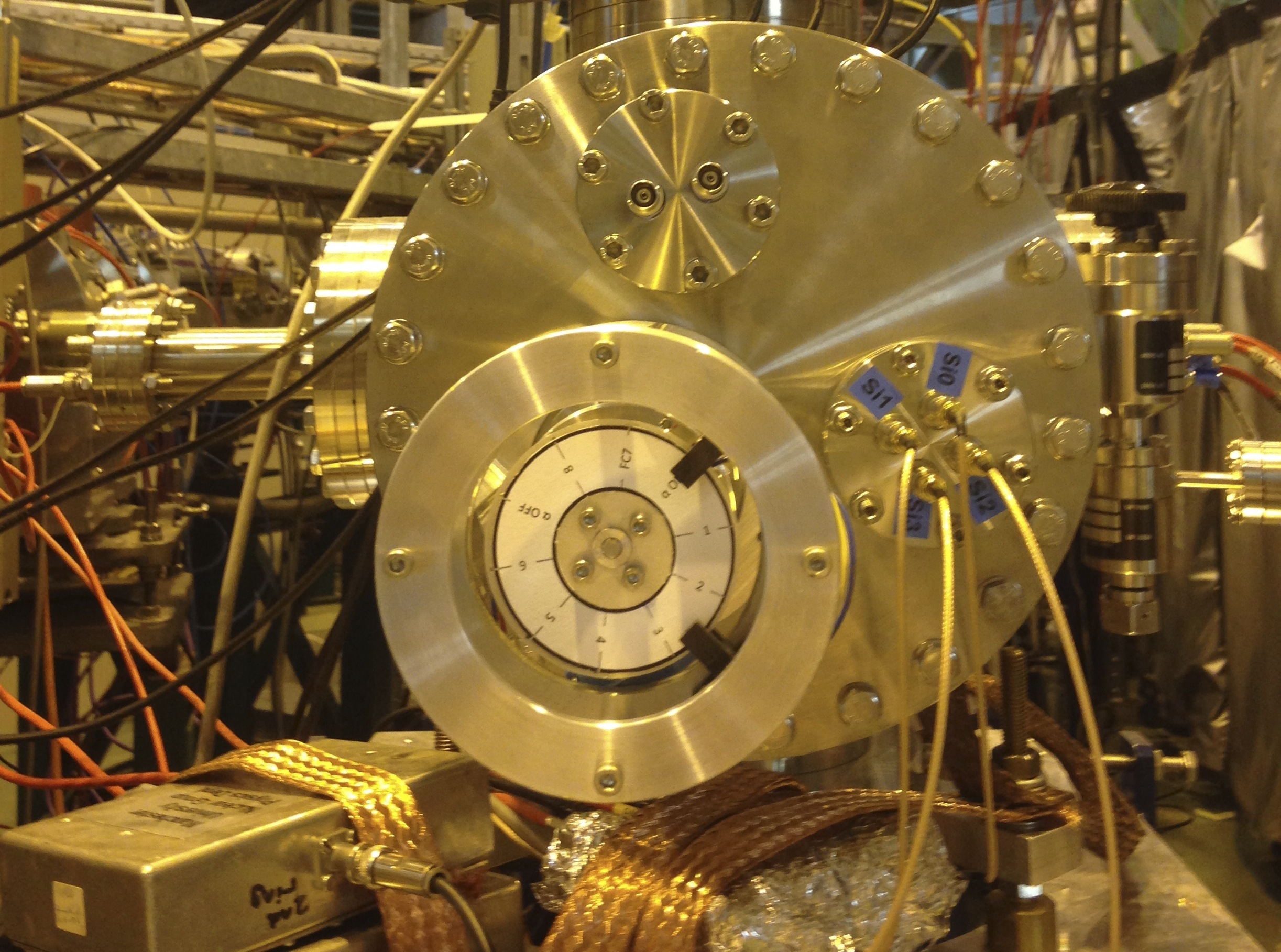
The DSS houses a rotatable steel wheel that contains 8 thin carbon foils, into which the radioactive ion beam can be implanted.
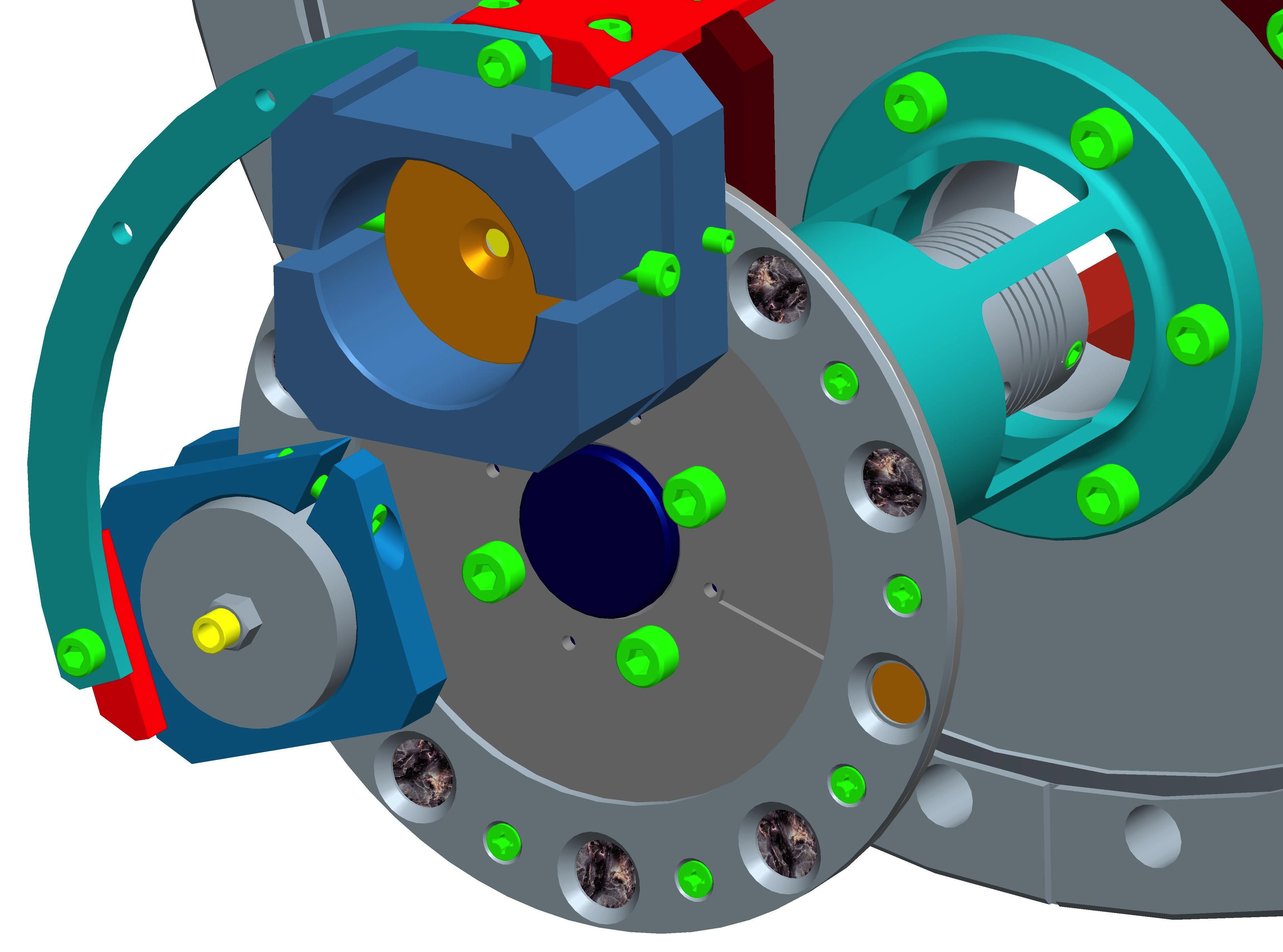
The carbon foils are surrounded by two silicon PIPS detectors, that can detect any alpha- or beta-particles emitted from the implantated ions.
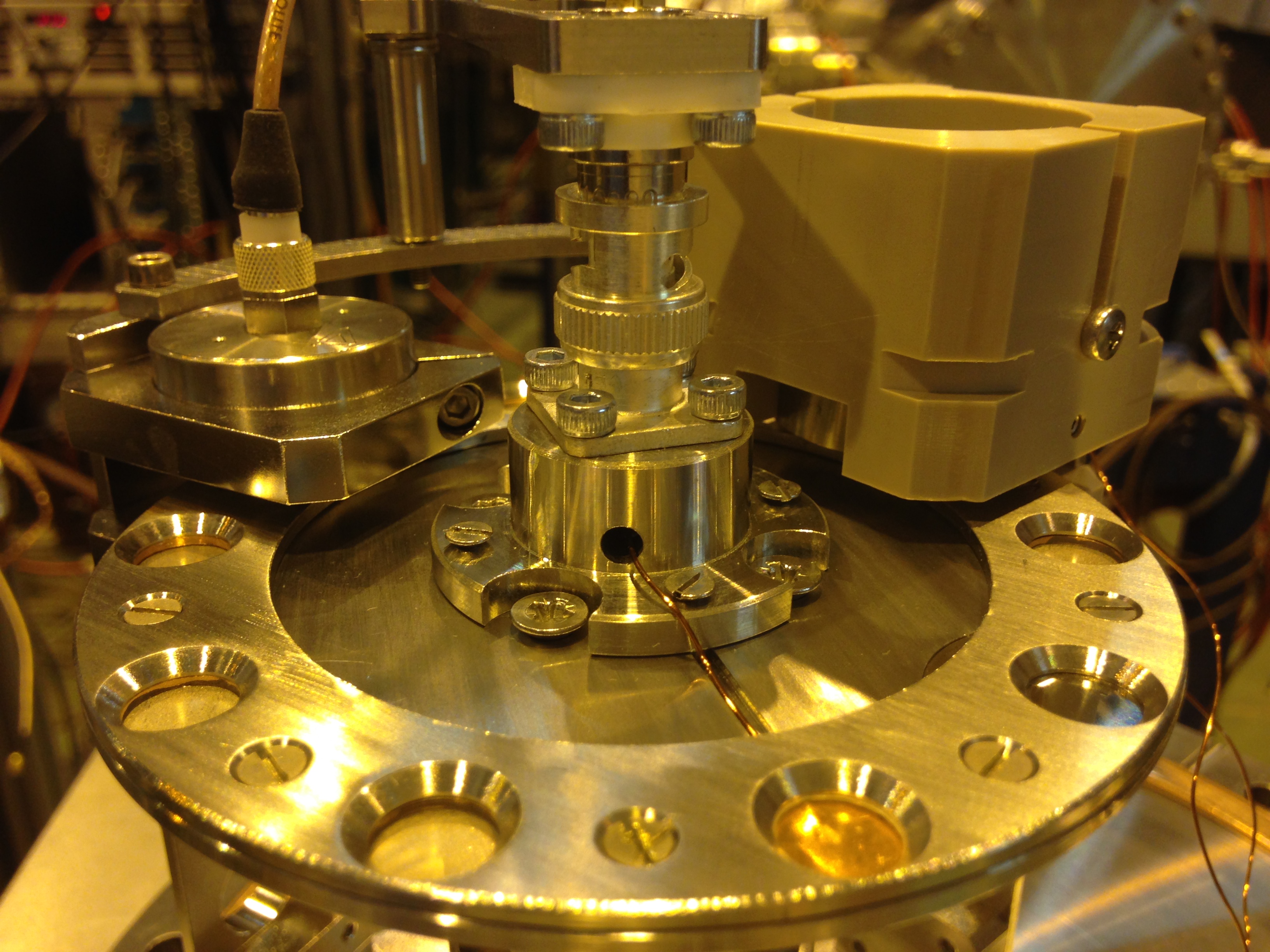
In addition, the steel wheel houses a Faraday cup to aid beam tuning and two alpha sources to calibrate the silicon detectors.
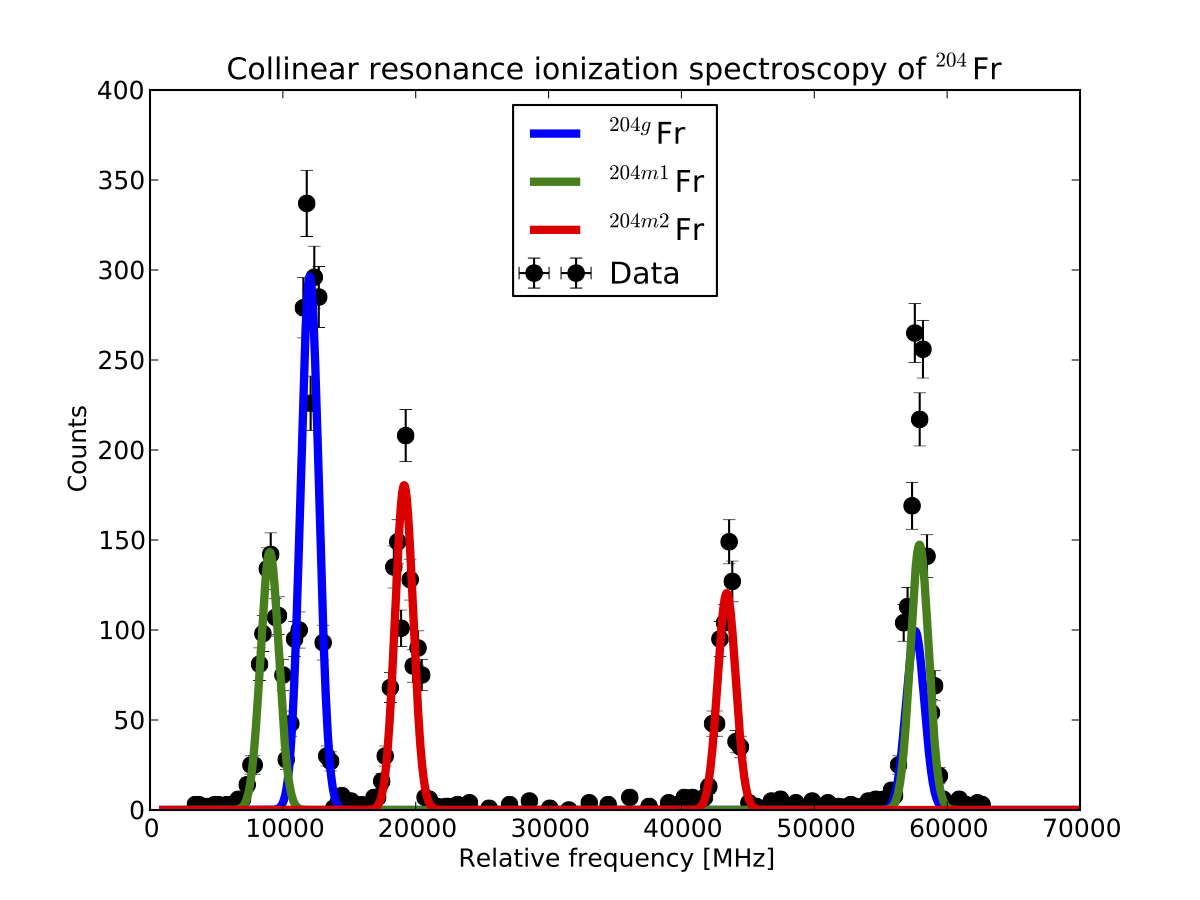
The figure above shows the hyperfine structure of the ground, first and second isomeric state of 204Fr. By sitting the laser on a particular frequency, we can selectively ionize just one of these states and measure its radioactive decay.
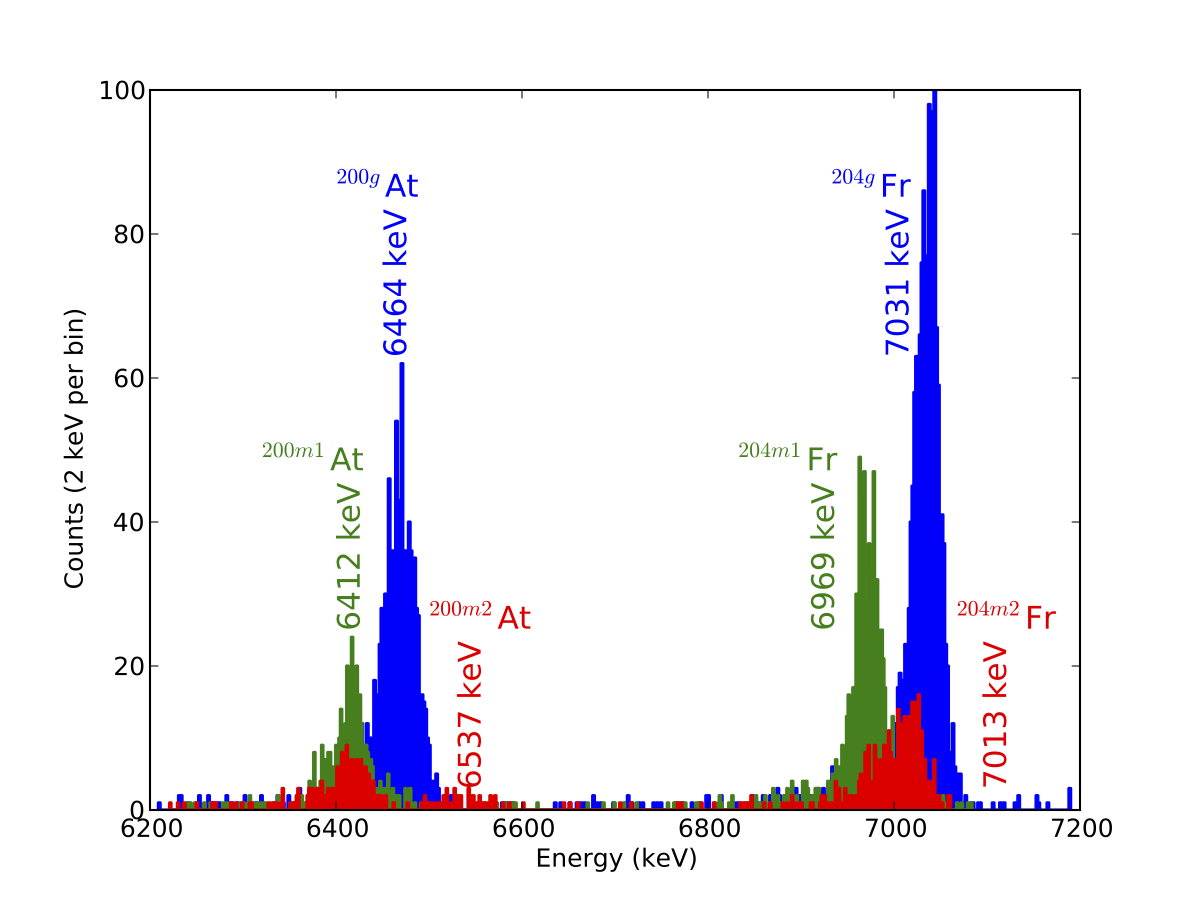
Above is the energy spectrum of the emitted alpha particles when the laser frequency ionizes just the ground, first or second isomeric state of 204Fr. Each state displays a characteristic alpha-particle energy.
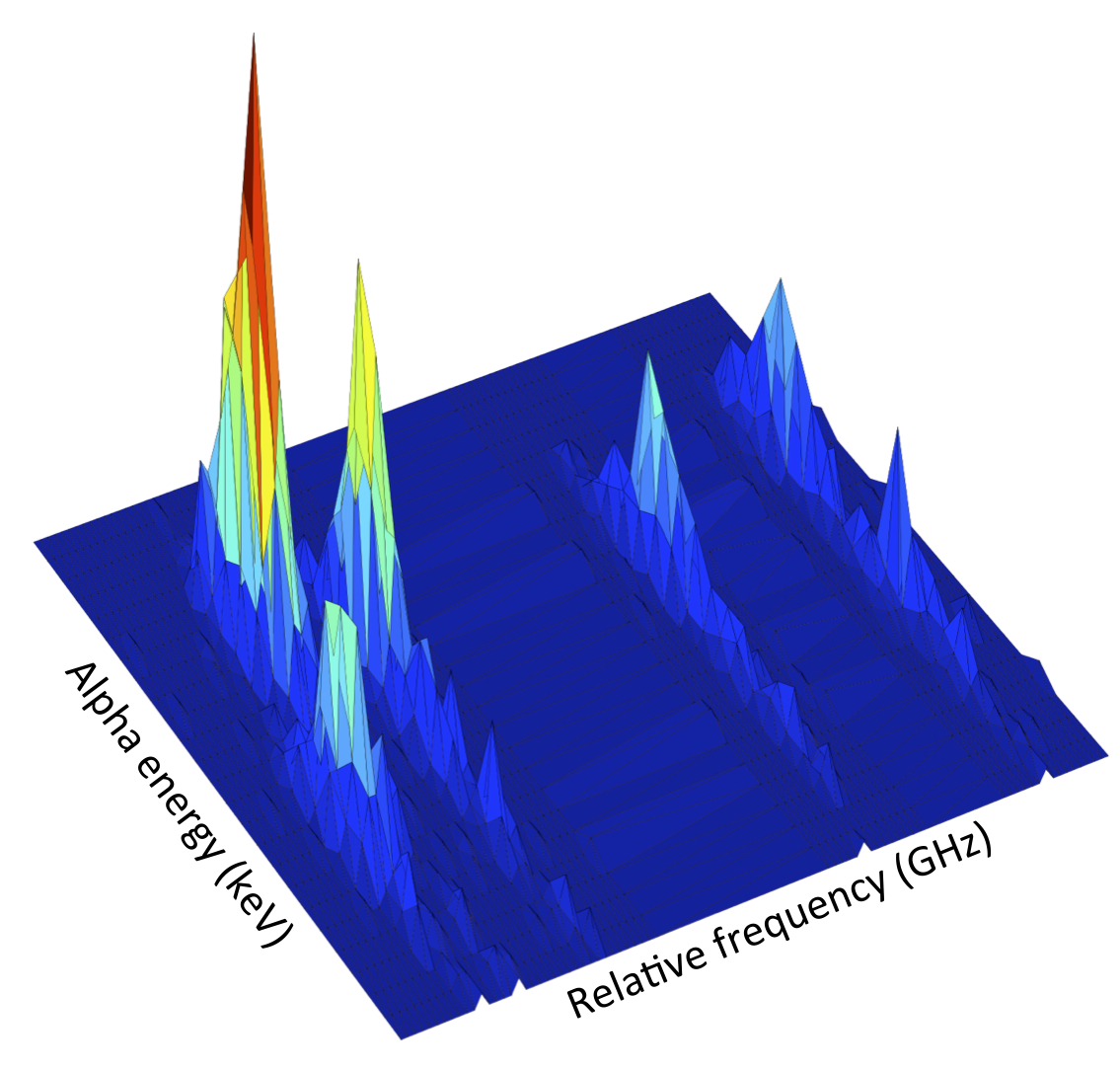
The 2D plot on the left shows how the alpha-particle energy changes as the laser frequency is scanned, and the different nuclear states of 204Fr are resonantly ionized.
In addition to performing laser-assisted nuclear decay spectroscopy on pure isomeric beams, the DSS can be used to identify the unknown components of a hyperfine structure scan. This provides immediate identification of any unknown or overlapping components present in the scan.
